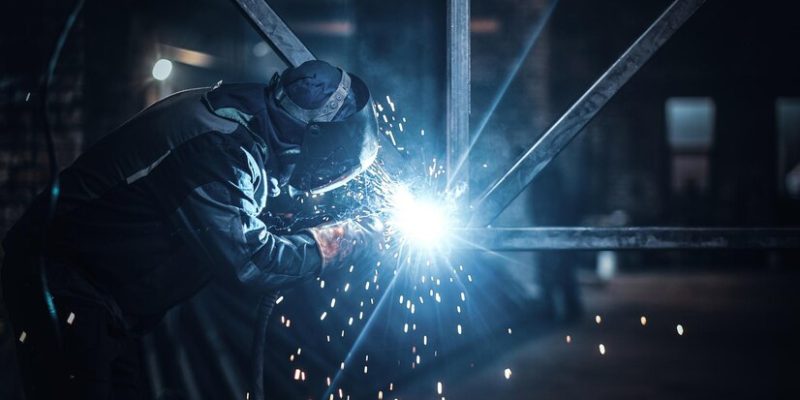Safety should always be at the forefront of our minds in the world of welding. While a valuable skill, arc welding presents its risks. So, this blog will delve into the essential protective measures that welders need to take to ensure a secure work environment. From the use of argon gas to proper personal protective equipment (PPE), here’s everything you must know:
Understanding The Arc Welding Environment
Arc welding involves using intense heat generated by an electric arc to melt metals and create strong bonds. While this process is essential in various industries, it’s not without its hazards. Here are some critical aspects to consider.
Intense Heat and Light: Arc welding produces extreme temperatures and blinding light, which can cause burns and eye damage if precautions are not taken.
Harmful Fumes and Gases: The welding process can release harmful fumes and gases, including welding fume particulates and ozone, which can harm the respiratory system.
Electrical Hazards: Working with electricity always presents risks. Electrical shock or arc flash can occur if proper precautions are not followed.
Protective Measures For A Secure Work Environment
To mitigate these risks and ensure a secure work environment in arc welding, consider the following protective measures:
Personal Protective Equipment (PPE)
Head Protection: Welding helmets with auto-darkening lenses shield your face and eyes from intense light. They adjust the darkness level automatically, providing clear visibility when welding starts.
Eye Protection: Safety glasses or goggles with side shields are essential to protect your eyes from flying debris and UV radiation. Welding helmets offer added protection with a full face shield.
Respiratory Protection: Depending on the type of welding and materials used, respirators may be necessary to safeguard against fumes and gases. Ensure that your respirator is suitable for welding applications.
Body Protection: Welding jackets or flame-resistant clothing from leather or cotton materials protect against sparks and burns.
Hand Protection: Welding gloves are designed to shield your hands from heat and sparks. They come in various materials, including leather and Kevlar.
Proper Ventilation
Adequate ventilation is crucial to remove welding fumes and maintain air quality. Local exhaust ventilation systems can help capture and filter harmful contaminants. So, in confined spaces, consider using portable ventilation units.
Safe Work Practices
Always follow safe work practices, such as keeping the work area clean and organized to prevent tripping hazards. Likewise, ensure all electrical equipment is in good working condition and follow lockout/tagout procedures when necessary.
Read Also: Preparing To Sell Your Home: A Complete Checklist
Fire Safety
Have fire extinguishers readily available in the work area, and ensure all personnel know how to use them. Keep flammable materials away from the welding area, and use fire-resistant barriers when needed. Additionally, designate a designated fire safety officer or monitor to oversee fire safety protocols during welding operations, ensuring swift and effective responses in case of emergencies.
Argon Gas Shielding
Argon is often used in TIG (Tungsten Inert Gas) welding to shield the weld pool from atmospheric contamination. This inert gas creates a stable environment for welding, reducing the risk of defects in the weld. Proper handling and storage of argon gas cylinders are essential to prevent accidents.
Conclusion
Arc welding is a valuable skill, but it comes with inherent risks that should not be underestimated. To ensure a secure work environment, welders must prioritize safety through personal protective equipment, proper ventilation, adherence to safe work practices, fire safety measures, and the careful handling of argon gas. By taking these protective measures seriously, we can enjoy the benefits of welding while minimizing the associated risks, creating a safer and more secure work environment for all involved. Remember, in arc welding, safety always comes first.
Read Also:
















